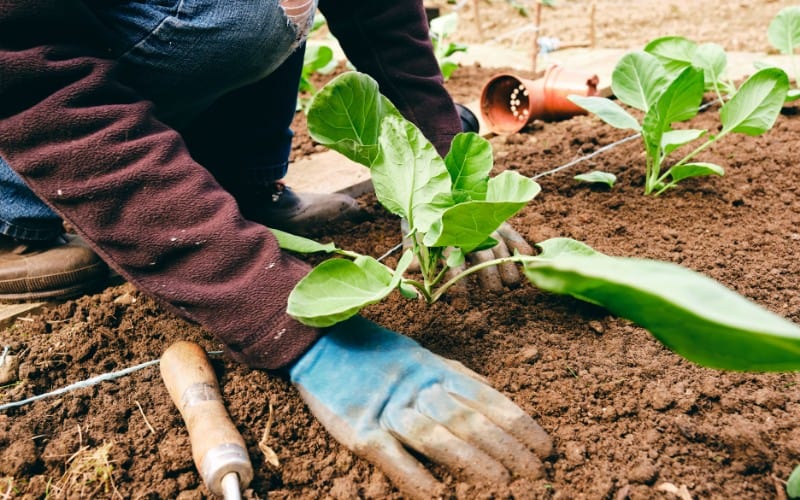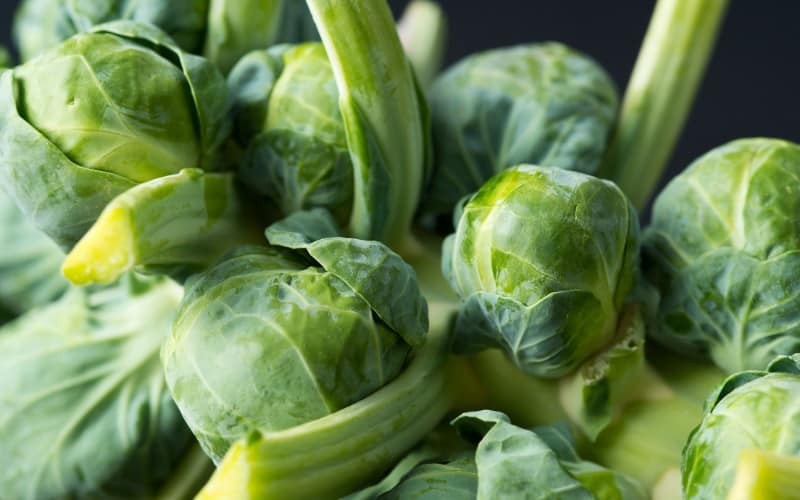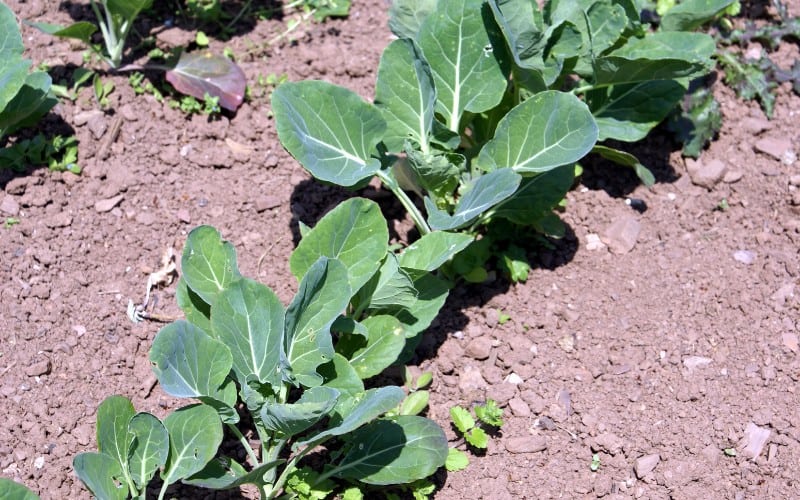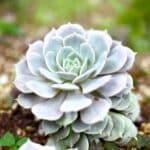Brussel sprouts are mainly available in the fall because the perfect cold-weather needed for its optimal growth only shows up during spring. And spring is barely three months. It will take at least 80 days for the Brussel sprout to be ready for harvest.
The sprouts, also known as heads or buds, look like small cabbages on a long stem. These sprouts first appear at the stem's base, and the gardener should pick them once they mature.
You can remove the leaves near the bottom so the plant can yield more, but you should not touch the leaves on top at all. The leaves on top protect the Brussel sprouts from harsh weather conditions.
Brussel sprouts will not die off immediately in the face of hot or cold weather but planting the sprout early for harvest before the initial frost is the best way.
Like every other plant in the garden and the wild, Brussel sprouts have problems that hamper their growth. In this article, we would talk about some of the Brussel sprouts growing problems you should know and how to prevent and treat them when they eventually do occur.
Table of Contents
Brussel Sprouts Growing Problems

1. Loose Sprouts
One of the most familiar growing problems the Brussel sprouts have is the condition known as loose sprouts.
What Are Loose Sprouts?
Loose sprout is a condition whereby the head of the bud of your Brussel sprout forms badly. The Brussels have not just bad head but also loose leaves. The head and leaves of the Brussel sprout are supposed to be firm. Two things cause loose sprouts:
- Planting the Brussel sprouts in a soil that is not rich enough to support it. While the Brussel sprouts are not hard to cultivate, they feed heavily and need extra fertilization to grow well. When you do not provide this, the plant will grow but will have badly formed buds.
- Another cause of loose leaves is hot weather conditions. The ideal weather for the Brussel sprout is the cold weather of spring. Scorching temperatures will lead to the head forming poorly.
What Do You Do to Prevent Badly Formed Heads?
Put enough fertilizer in the soil when you plant the Brussel sprouts. Brussels sprouts need constant watering and this, in turn, leaches nutrients from the soil.
Hence, you should add fertilizers once every four weeks. This will cause your Brussel sprout heads to form correctly. Also, make it a habit to prune your Brussel sprouts so that the plant will channel every energy to developing giant and firm heads.
Plant the Brussel sprouts early so that they do not get to experience the scorching heat of summer. You can use hoop houses or cold frames to protect the plants.
If you cannot, for any reason, plant early, get seedlings of Brussel sprouts that have a quicker maturity rate. These types will mature weeks before other species, and so their heads will be perfectly formed in cold weather.
2. Pests
Just like many other plants, the Brussel plants have pains that trouble their growth. Brussels sprouts and cabbages suffer in the hands of similar pests. Some of these pests include:
- Aphids
- Earwigs
- Leaf miners
- Maggots
- Slugs and snails
- Nematodes
- Cutworms
These pests have debilitating effects on the Brussel sprouts. It is essential to prevent and quickly deal with their occurrence.
What to Do to Prevent Pest Infestation on Brussel Sprouts
- Put the collar around your Brussel sprouts so that they will deter cutworms.
- Use a row cover or a net to cover the Brussel sprout to minimize the damage of flying insects.
- Practice rotation of crops so that the insect larva in the soil will have nothing to feed on to grow. If they die of starvation, they won’t grow into menacing adults.
- Apply organic pesticides but with uttermost care. This should be the last resort.
- Kill physically any large pest that may be causing harm in your garden.
- One of the best prevention measures against pests is the cultivation of strong and healthy plants. Get seedlings of pest-resistant Brussel sprouts and plant them in a place where they can get enough nutrients, water, and sunlight.
3. Diseases
Diseases are part of the 10 Brussel sprouts growing problems. These diseases are mainly fungal and bacterial. Most of them do not do much except mar or discolor foliage. A few of them cause defoliation, and this affects the ability of the plant to photosynthesize.
Most bacterial diseases thrive in wet areas, and this exactly why Brussel sprouts suffer from bacterial infections because the soil has to be moist. The solution to this is to identify infected plants and burn them. Overhead watering should reduce drastically.
Fungal diseases also spread faster in wet conditions. Some of them can even be potent during winter. White fungal infections also thrive where there is dirt. It is best to clear the garden of dead plant matter as they may be spore carriers.
Molds like powdery mildew, downy and white mold are also part of the 10 Brussel sprout growing problems. You can combat them, however, by spacing your plants properly. This will save your other Brussel sprouts stalks if one gets infected. Also, use drip irrigation instead of overhead irrigation.
With good gardening habits, you can effectively manage many problems that plague the Brussel sprouts.
4. Bolting
Bolting is a part of the most common Brussel sprout growing problems. It is a condition whereby a Brussel sprout begins to grow flowers and have seeds. Any Brussel sprout that behaves this way cannot form heads.
This is caused by Brussels experiencing temperatures lower than 50 degrees Fahrenheit for a long time. Brussel sprouts with hollow stems can also cause bolting as hollow stems prevent proper nutrient and moisture exchange.
The solution to bolting is planting the Brussels sprouts early enough. Another is selecting a Brussel sprout that is bolting-resistant.
5. Stunted Brussel Sprouts
Stunted Brussel sprouts are caused by worms that have burrowed into the roots of the Brussel sprouts. These worms are giant with brown heads and gray grub. They are June beetle’s larva.
Always check the soil for them before you plant. When you see them around your plants, kill them by hand or drown them by flooding the soil. Make sure your garden is free of debris that breeds the worms.
>>Here's how to fix stunted growth in plants!
6. White or Yellow Spots on leaves
Stink or harlequin bugs cause white and yellow spots on leaves. They are black with orange or red markings, and they feed on plant tissue fluid. This is what causes the leaves to wilt.
Destroy the egg masses and kill the bugs. Ensure that your garden is free of weeds and crop residue as those are where the harlequin bugs breed. Use pesticides like rotenone and pyrethrum to kill them.
7. Defoliated plants and Half-Eaten Leaves
Blister beetles cause defoliation of leaves. The blister beetles are black or gray and are a three-quarter inch long. Their wings have striped spots. You control them by physically killing the beetles. Another effective way is by ridding the garden of debris and weeds.
Planting your Brussel sprouts in spring will disrupt the life cycle of the beetle. The larva would starve and die. Use pesticides such as Seven or Rotenone.
8. Skeletonized Leaves with Large Holes
Armyworms cause this. They are caterpillars and are dark green. The eggs of the mottled gray moth hatch to become armyworms. They eat leaves and build webs on the leaves and live therein.
Pick the caterpillars by hand and destroy them. You can also plant after harvest, so the pupa is exposed. Kill them, so they don’t reach adulthood. Use traps that have floral lures.
9. Root Rot
This is caused by a fungus, clubroot, leaving inside the soil. It messes with the root’s nutrient and water uptake. To control it, destroy the plants that are already infected together with the ground near the roots.
Ensure your garden is clean and has no weed or debris to house the fungus. Also, practice crop rotation for two years. Make sure the transplants you are getting are disease-free.
10. Curling and Yellowing of Leaves and Plant Death
Fusarium is the causative organism of curling leaves. It occurs in warm climates, and leafhoppers spread the disease. You want to uproot infected plants and burn them.
Use pesticides to control the leafhopper. Constant weeding so the leafhoppers won’t have a place to stay. Practice crop rotation. Plant Brussel sprouts that are resistant to the cations of the fungus.
Conclusion
These are some of the most common Brussel sprouts growing problems. For you to record success in your Brussel sprout growing journey, you have to do the following:
Space out your plants. When you give enough space between each stalk, you make it more challenging for an infection to move from one stem to another. It is also harder for cabbage worms to go from stalk to stalk.
Sowing indoors helps to minimize the occurrence of pests and diseases.
Make sure your plant has enough sunshine, water, and soil nutrients. Deficiency in any of these would cause one of the various growing problems for Brussel sprouts mentioned here.
Lastly, make sure you harvest your crop immediately after maturation not to get further destroyed by pests and diseases available.






